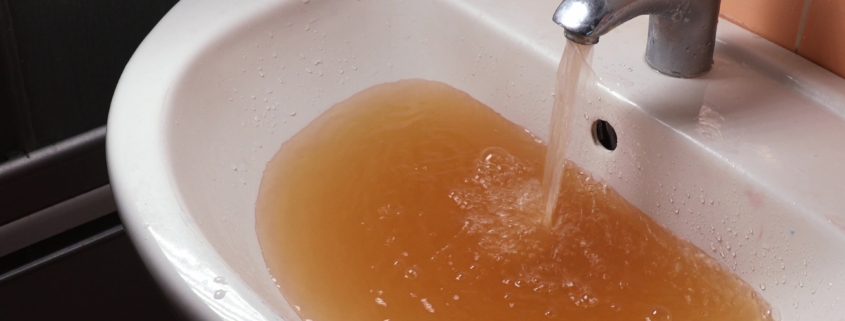High iron content in water may not seem like a major concern at first glance, but prolonged exposure can cause serious problems for your health, home, and environment. In this blog, we’ll explore the high iron side effects that homeowners, industries, and municipal systems should be aware of — and what you can do to fix them.
What Causes High Iron Levels in Water?
- Corroding pipes (especially older iron ones)
- Private wells drilled into iron-rich aquifers
- Poor filtration in municipal or rural water systems
- Ferrous Iron (Fe2+): Dissolved and clear in appearance
- Ferric Iron (Fe3+): Oxidized and visible as reddish-brown particles or stains
High Iron Side Effects on Human Health
Digestive Distress
- Upset stomach
- Constipation
- Metallic taste
Iron Overload in Vulnerable Individuals
People with hemochromatosis (a condition causing iron accumulation) are at greater risk when exposed to high iron water. It may contribute to iron overload, potentially affecting the liver, heart, and pancreas.
Bacterial Growth
- Slime build-up in toilets, tanks, and pipes
- Musty or unpleasant taste and odor
- Increased biofilm risks in drinking systems
High Iron Side Effects on Plumbing and Appliances
Iron deposits affect more than just your health — they wreak havoc on your home infrastructure.
Pipe and Valve Blockage
Iron particles can build up inside plumbing systems, restricting water flow and increasing water pressure issues.
Appliance Damage
- Reduced lifespan
- Increased energy use
- Frequent repairs
Staining
- Orange or brown stains in sinks, tubs, and toilets
- Laundry discoloration, especially on whites
- Rust-colored residue on kitchenware and fixtures
Environmental and Aesthetic Concerns
- Taste and odor issues: Iron gives water a metallic flavor that’s hard to ignore
- Aquatic damage: Iron deposits in lakes or streams can suffocate aquatic life
- Landscape staining: Sprinklers using high-iron water can stain pavement, walls, and grass
How to Test and Identify High Iron in Water
- Reddish-brown stains in the bathroom or kitchen
- Metallic taste or smell
- Sediment buildup in faucet aerators
- Slimy bacterial film in toilets or tanks
- At-home test kits for iron concentration (in ppm or mg/L)
- Professional water testing services
According to the EPA Secondary Drinking Water Regulations, the recommended iron limit is 0.3 mg/L — higher levels may not pose immediate health risks but are considered undesirable due to aesthetic and operational concerns.
Treatment Options for High Iron in Water
Sediment Filtration
Useful for removing ferric iron (particles). Not effective for clear-water (ferrous) iron.
Oxidation and Filtration
Combining oxidation with media filtration (e.g., manganese greensand, Birm filters) is effective for treating ferrous iron.
Water Softeners
Capable of removing small amounts of iron (<3 ppm) along with hardness minerals.
Reverse Osmosis Systems
Best for residential or light commercial applications with low to moderate iron levels, especially when targeting multiple contaminants.
Advanced Solutions from ADVANCEES
- Remove iron, manganese, and sulfates
- Protect downstream equipment
- Improve drinking water quality
Final Thoughts: Don’t Ignore the Signs
ADVANCEES is here to help with industry-grade, USA-manufactured water treatment systems tailored to your specific challenges.
Contact us today at sales@advancees.com or request a quote at ADVANCEES.com.



